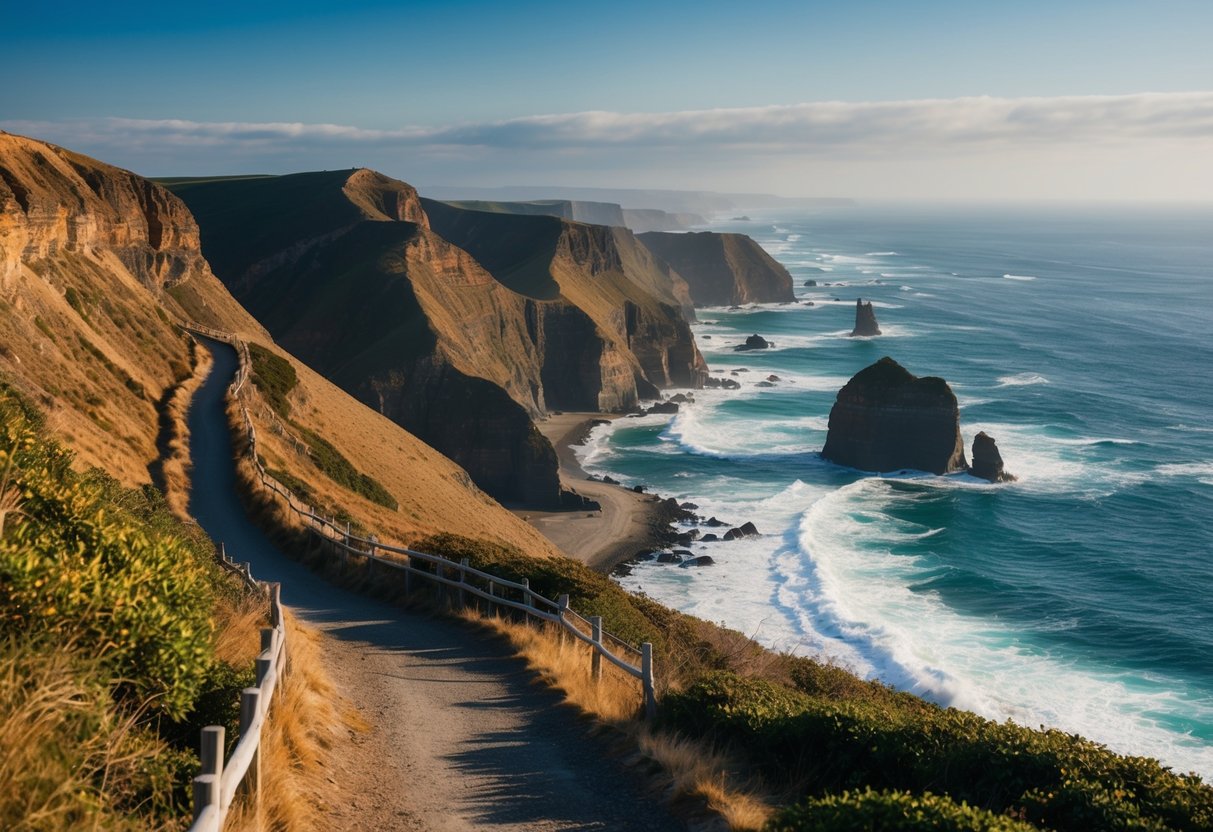
Safety Tips and Preserving Australia’s Coastal Ecosystems
When exploring Australia’s coastal hikes, it’s crucial to prioritize safety and environmental conservation. Being aware of local wildlife and practicing responsible travel are key to preserving these natural landscapes.
Trail Safety and Wildlife Interaction Guidelines
Hiking along Australia’s coastline can present unique challenges, including varied terrain and unpredictable weather. Visitors should ensure they have sturdy footwear and are equipped with plenty of water. Carrying a map and staying on marked trails help avoid accidents. Always inform someone of your plans before setting out, and check local weather conditions for any changes that might affect safety.
Wildlife, such as snakes, birds, and kangaroos, inhabit these trails. Hikers should maintain a respectful distance, refrain from feeding animals, and store food securely to avoid attracting wildlife. Knowing what to do if an encounter occurs can help prevent accidents and support conservation efforts. Educating children on these guidelines ensures a safe experience for the whole family.
Conservation Efforts and Responsible Travel
Australia’s coastal ecosystems are fragile and require protection. Visitors can support conservation by adhering to minimal impact practices. Carry out all trash, including biodegradable waste, to prevent pollution. Sticking to designated paths minimizes damage to native plants and habitats.
Supporting local conservation initiatives, such as beach clean-ups, enhances preservation efforts. Travelers should also consider low-impact transportation options, such as walking, cycling, or using public transport when accessing trailheads. By focusing on these responsible travel practices, visitors help ensure the beauty of Australia’s coastal regions remains for future generations.
Accessibility and Family-Friendly Coastal Walks
Coastal hikes in Australia provide stunning views and cater to various skill levels. Many trails focus on accessibility, ensuring that families, including those with strollers or limited mobility, can enjoy these scenic routes. Outdoor activities along these trails also engage children and create memorable experiences for young ones.
Walks for All Skill Levels
Australia offers several coastal paths that suit a range of walking abilities. One such trail is the Bondi to Bronte Walk in Sydney, perfect for families and accessible with its well-maintained path and gentle inclines. It caters to those seeking a short and easy coastal stroll with panoramic ocean views.
The Great Ocean Walk in Victoria offers sections that families can explore without committing to the full track. Selected parts are flat and well-marked, suitable for those with limited mobility or children in strollers. This flexibility makes it ideal for families wanting to appreciate the natural beauty without overexerting themselves.
The Lighthouse Walk in Cape Byron, NSW, is another accessible trail that attracts walkers of all ages. The path is paved, and parts are wheelchair accessible, allowing everyone to enjoy the breathtaking sights. Families can take pleasure in watching dolphins or whales from vantage points along the way, making it a delightful experience for all.
Engaging Outdoor Activities for Children
Trails often incorporate activities that captivate children’s imaginations. For instance, the Yanchep National Park coastal walk in Western Australia features opportunities to see a variety of wildlife. Koalas in their natural habitats and vast wetlands offer an educational experience for young explorers.
The Kangaroo Island Wilderness Trail in South Australia is another child-friendly option. Serviced by guides who share fascinating insights about the local flora and fauna, children learn while they walk. Interactive elements such as educational signs help keep young minds engaged along the way.
In Victoria, the Mornington Peninsula’s Bushrangers Bay Walk is a family favorite. Featuring rock pools and sandy beaches, it allows children to explore and interact with nature. Ideal for curious young minds, the trail provides opportunities to collect shells or spot unique sea creatures, blending fun with learning.